Symbolism in Chinese Art and Antiques: Part One - Animated Nature
PRIMITIVE - Friday, July 07, 2017By Glen Joffe
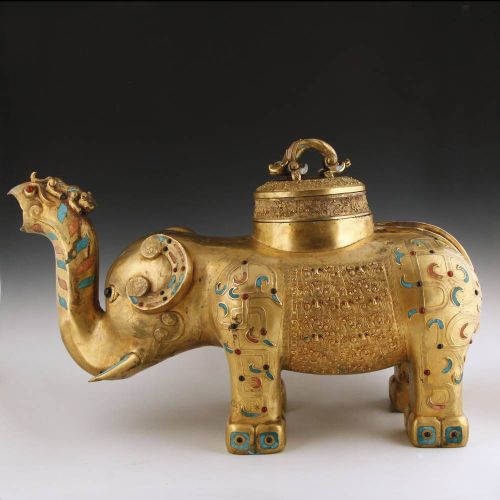 |
|
The purpose of this blog is to provide the reader with a useful, practical guide to interpreting the appearance of animal symbols in Chinese art and antiques. The visual language found in Chinese art and antiques is so rich, even minor artworks can become steeped in symbolic significance. Chinese art has evolved over roughly 5,000 years, including approximately 3,500 years of written records. During that time the origin of many symbols has been lost; however, there does seem to be general agreement among scholars, researchers, connoisseurs, and collectors on the meaning of various symbols. Although there are multiple categories of symbols in Chinese art, this particular blog deals only with animal symbols, or “animated nature.”
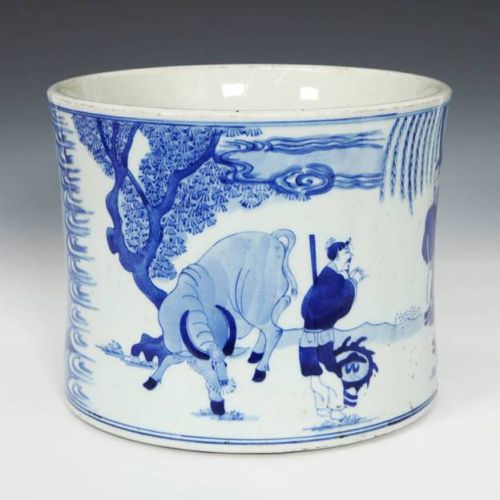 |
|
The use of animal symbols dates to the very beginning of humankind’s journey; in China, all the way back to the story of P’an Ku. Known as the first man; in western terms as the Chinese Adam, P’an Ku (also known as Pan Gu or Pangu) is a mythological figure credited with creating heaven and earth from his extensive knowledge of yin and yang, the principal of duality in all things. P’an Ku was aided in the enormous task of creation by a group of assistants found in animated nature: the Tortoise, Azure Dragon, Phoenix and White Tiger, a combination of real and mythological animals. This animal group suggests animal symbols in Chinese art and antiques can be broken down into two categories; the real and the imagined, or stated differently, the actual and the mythological.
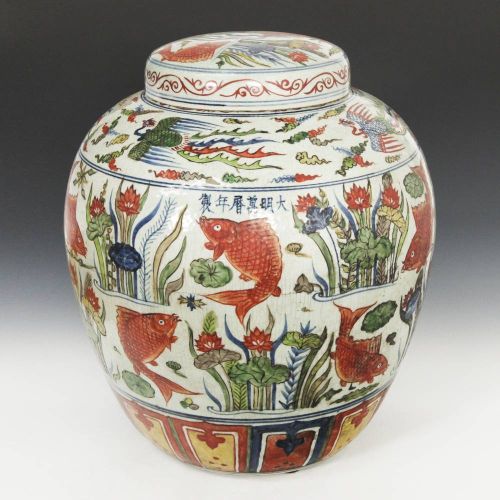 |
|
According to Chinese legend, P’an Ku divided the universe into four parts and put each of his four assistants in charge of one part. The Dragon was put in charge of the eastern quadrant and spring burst forth. Thus the Dragon came to symbolize renewal, guardianship, and protection. The Phoenix was put in charge of the southern quadrant. Summer appeared, so the Phoenix came to symbolize sunshine, comfort, kindliness, joy and warmth. In the western quadrant, P’an Ku placed the White Tiger and autumn erupted. The White Tiger came to symbolize fulfillment, maturity, a strong yield and a life well-lived. Finally, in the northern quadrant P’an Ku placed the Tortoise and winter arose. It was inevitable the Tortoise became associated with long life, endurance, and strength, characteristics needed to survive bitter cold. Overseeing all four quadrants was the Unicorn, a symbol of perfection, an influence on the side of order and dignity, a good omen, and the ultimate symbol of longevity, family, felicity, and wisdom.
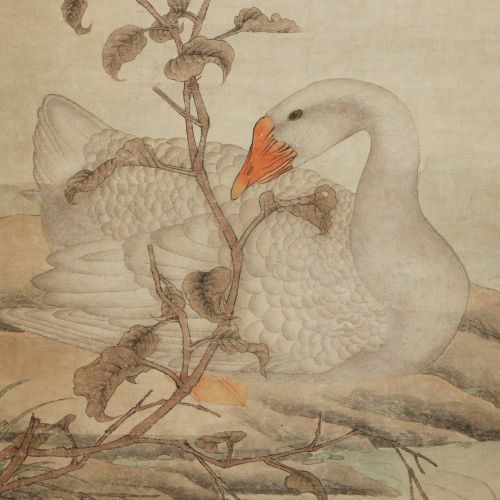 |
|
P’an Ku and his assistant’s aside, there is an incredibly broad range of animal symbols found in Chinese art and antiques, and their appearance on any given work can usually be associated with the intention of the artist. In a sense, you could say artists meant their work to have meaning beyond personal expression or pure decoration, and animal symbols provided one way this meaning could be expressed.
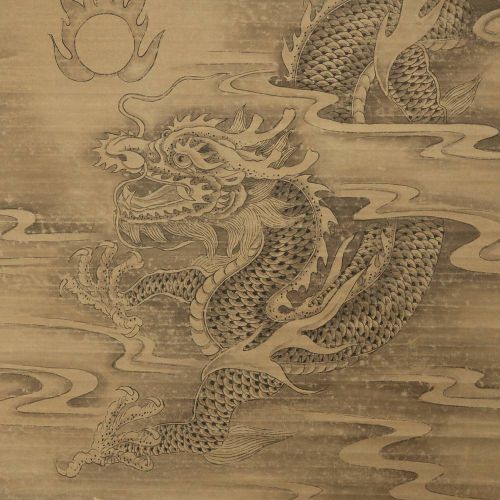 |
|
Traditionally, animal symbols were divided into five classes based upon composition:
1) Feathered, with the Phoenix leading in significance and including all birds
2) Hairy, with the Unicorn in the lead
3) Naked, a reference to the human form
4) Shells, with the Tortoise as the most prominent
5) Scaly, led by the Dragon.
This blog does not deal with human symbols, which is reserved for another blog.
The following is an alphabetical listing of some of the most prominent animal symbols found in Chinese art and antiques and what they represent:
| Ant | Emblem of patriotism, virtue, self-interest, and continual striving. |
|
| Bat |
Symbol of happiness and long life. The bat in mythological terms is said to live 1,000 years and the design of five bats is called the “Five Blessings,” which include old age, wealth, health, love of virtue, and natural death. |
|
| Bear |
Bravery and strength. |
|
| Butterfly |
Joy and happiness in marriage or marital bliss. |
|
| Cicada |
Represents happiness, eternal youth, immortality, and resurrection. It also represents restraint and can curb immorality. |
|
| Crane |
The Crane represents long life or longevity. In Chinese lore, the Crane is second only to the Phoenix in terms of importance. A Crane with one foot raised and wings spread will guide a departed soul to the “Western Heaven.” A Crane shown among clouds means wisdom; in pairs or as a single Black Crane, the ultimate form of longevity; and with pine trees, a symbol of determination and power.
|
|
| Crow |
The Crow is the symbol of the sun. Hearing its voice between the hours of three and seven in the morning means that gifts are on the way; between seven and eleven means rain is on the way. A white crow means the opposite. |
|
| Deer |
An emblem of nobility and noble character. The Deer is the only animal said to have the ability to find the fungus of immortality. |
|
| Dog |
Faithfulness and loyalty. |
|
| Donkey |
Faithfulness and loyalty. |
|
| Dove |
Represents long life, fidelity, and loyalty. |
|
| Dove |
Represents long life, fidelity, and loyalty. |
|
| Dragon |
The Dragon sits atop the scaly class of animated nature and has the capacity to render itself invisible at will. Consequently, it is also a symbol of stealth and surprise. In addition, it represents vigilance, goodness, strength, and the productive power of moisture. |
|
| Dragonfly |
Summer, purity, and fleeting because they do not last all year long. |
|
| Duck |
The Duck represents felicity, or intense happiness. Generally shown with the lotus (a symbol covered in another blog), the attachment of the Duck to its mate makes this animal a symbol of conjugal fidelity or marital bliss. |
|
| Elephant |
Symbol of strength, sound judgment, discernment, and prudence. When shown with a rider it symbolizes happiness. |
|
| Fish |
Symbolizes abundance, wealth, regeneration, harmony and wedded bliss. Often given as a betrothal gift, Fish shown in pairs provide protection against evil |
|
| Fowl |
Honesty, wisdom, and vigilance; a red fowl means protection against fire; a white fowl guards against evil astral influences and chases away demons. |
|
| Fish |
Symbolizes abundance, wealth, regeneration, harmony and wedded bliss. Often given as a betrothal gift, Fish shown in pairs provide protection against evil. |
|
| Fox |
Influential in matters of health and wealth, the Fox symbolizes longevity and cunning strength to achieve one’s goals. |
|
| Fowl |
Honesty, wisdom, and vigilance; a red fowl means protection against fire; a white fowl guards against evil astral influences and chases away demons |
|
| Fox |
Influential in matters of health and wealth, the Fox symbolizes longevity and cunning strength to achieve one’s goals. |
|
| Geko |
Proficiency and adroitness. |
|
| Goose |
The symbol of love, truth, constancy and inspiration. When illustrated in pairs, it is emblematic of a happy married life. |
|
| Grasshopper |
Wisdom and nobility of purpose. |
|
| Hare |
Synonymous with Rabbit, the Hare symbolizes good fortune and is considered a good omen. The Hare also signifies long life, virtue, and hope. |
|
| Hawk |
Hawks, Falcons, Eagles are treated the same and symbolize boldness, keen sightedness, and focus. |
|
| Horse |
The Horse is the symbol of speed and perseverance. |
|
| Kingfisher |
Because it vies with the colors of the sky and the tint of the hills, the Kingfisher is the symbol of beauty and colorful clothing. |
|
| Leopard |
Bravery, ferocity. |
|
| Lion |
Valor, high energy, mastery of any given subject or circumstance, and guardianship. |
|
| Lobster |
Regeneration, steadfastness, and protection. |
|
| Magpie |
The Chinese character for Magpie literally means “bird of joy.” Consequently, the bird is associated with good luck; its appearance a good omen. Legend states that a house with a Magpie nest in front will be a place of good luck. |
|
| Monkey |
Symbolizes good health, success in all matters, and protection. The Monkey is said to drive away malicious spirits. Shown atop a Horse, the Monkey expresses a wish for quick advancement or a fast promotion. |
|
| Mosquito |
Represents wickedness and rebellion. An old Chinese saying goes, “A multitude of people with evil dispositions can stir up strife just as a crowd of mosquitoes can make a noise like thunder." |
|
| Owl |
While the Owl is considered a symbol of wisdom in the west, in Chinese art the Owl is considered a symbol of misfortune. |
|
| Ox |
The Ox signifies spring and renewal. |
|
| Parrot |
The Parrot is the guardian of marital fidelity because it has an observant eye and an agile tongue. |
|
| Peacock |
Although not a native of China, this exotic bird is held in very high regard and considered an emblem of beauty and dignity. |
|
| Peng Niao |
A mythological bird of enormous proportions, it symbolizes rapid ascent and advancement. |
|
| Pheasant |
Represents beauty and good fortune and in the past was a symbol of “Imperial authority” and courage as it relates to decision making. |
|
| Phoenix |
The Phoenix is considered in Chinese mythology the empress of all birds, and thus, in the past was the symbol of the empress herself. This bird is also the symbol of warmth, harmony, sunshine, the season of summer, and the subsequent harvest, which is nourished by sunshine. First recorded as a symbol in 2600 B.C., the phoenix also represents expansion, especially as it relates to family. |
|
| Pig |
The Pig symbolizes the home. The Chinese character for family “illustrates” a roof over a pig, which many consider to be emblematic of the home. It also represents accumulated wealth; specifically as it relates to family. It is also a symbol of optimism. |
|
| Pixiu |
A Winged Lion, Pixiu symbolizes influence, wealth, auspiciousness, and is the protector for practitioners of Feng Shui. |
|
| Quail |
The Quail symbolizes courage and pugnacity or the natural disposition to be aggressive or feisty. If standing up for a worthy cause, the Quail symbolizes good fortune. |
|
| Rat |
Symbolizes timidity, toughness, and a wrathful spirit as well as sharp intelligence and a loyal nature. |
|
| Sheep |
Respect, loyalty, and light. |
|
| Snake |
The Snake is the emblem of cunning and to some, evil. It is also a symbol of healing, resistance, and wisdom. |
|
| Spider |
Good fortune, auspiciousness, and windfall. |
|
| Sqirrel |
Longevity. |
|
| Swallow |
Prosperity and renewal. |
|
| Swan |
Elegance and grace. |
|
| Tiger |
The model of courage and ferocity, the Tiger is also the symbol of sternness and magisterial dignity. In this regard, the Tiger also represents justice, courage and military prowess. It is also a symbol of protection. |
|
| Toad |
The Toad signifies the capacity to make money and great wealth. In Chinese mythology, Chan Chu (also known as Jin Chan, the Golden Toad, and the Money Frog) is said to appear to individuals that will soon receive good news. The Toad also symbolizes abundance, regeneration, and protection, for it is said to guard against bad luck. |
|
| Tortoise |
The ultimate emblem of long life or longevity, endurance and strength, the Tortoise also symbolizes the universe or the entire cosmos |
|
| Unicorn |
Symbolic of long life, grandeur, relevance, eloquence and intense happiness. |
|
| Wolf |
Greed and plunder. |